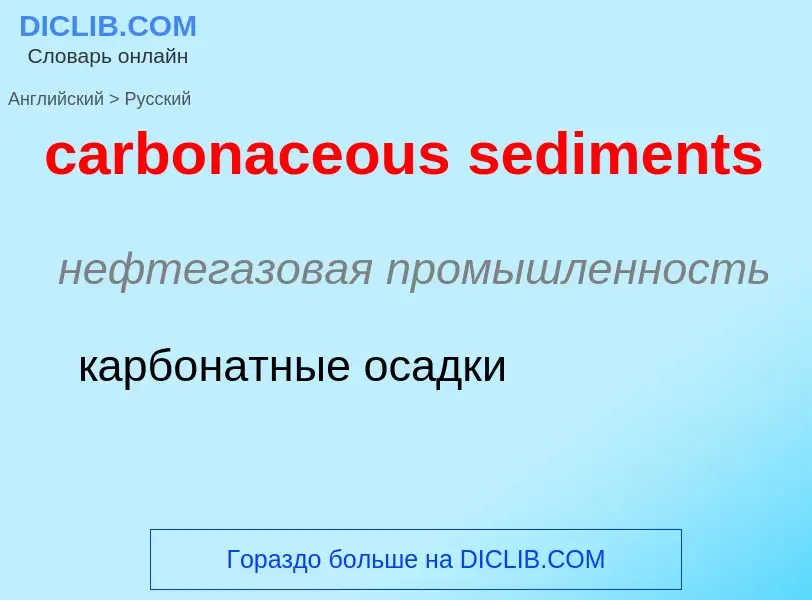Перевод и анализ слов искусственным интеллектом ChatGPT
На этой странице Вы можете получить подробный анализ слова или словосочетания, произведенный с помощью лучшей на сегодняшний день технологии искусственного интеллекта:
- как употребляется слово
- частота употребления
- используется оно чаще в устной или письменной речи
- варианты перевода слова
- примеры употребления (несколько фраз с переводом)
- этимология
carbonaceous sediments - перевод на русский
нефтегазовая промышленность
карбонатные осадки
['sedimənt]
общая лексика
осадок
отстой
нанос
отложение
отстойный
седиментационный
множественное число
наносы, отложения
нефтегазовая промышленность
осадок, отстой, гуща на дне
осадочная порода
вода и грязь из нефти
нефтяная эмульсия
осадочные отложения, наносы
Смотрите также
существительное
['sedimənt]
общая лексика
осадок
отстой
осадок, отстой
геология
отложение
осадочная порода
осадочная порода, отложение
глагол
общая лексика
осаждаться
отстаиваться
давать осадок
отстой
Определение
Википедия

A carbonaceous film or carbon film is an organism outline of a fossil. It is a type of fossil found in any rock when organic material is compressed, leaving only a carbon residue or film.
When an organism is buried under many layers of sediment, pressure and heat increase during diagenesis and if the organism lacks a hard skeleton, it will only leave this thin film of carbon residue on rock surfaces.
The soft tissues of organisms are made largely of organic carbon compounds. Sometimes, fossils contain only carbon. Fossils usually form when sediment buries a dead organism. As sediment piles up, the organism's remains are subjected to pressure and heat. These conditions force gases and liquids from the body. A thin film of carbon residue is left, forming a silhouette of the original organism called a carbon film. Plant fossils often occur as a residue or film of carbon.
The delicate fossils of the Burgess Shale include carbon film forms. Graptolites are an example of carbon film fossils.





![Sediment in the [[Gulf of Mexico]] Sediment in the [[Gulf of Mexico]]](https://commons.wikimedia.org/wiki/Special:FilePath/Sediment in the Gulf of Mexico.jpg?width=200)
![Sediment off the [[Yucatán Peninsula]] Sediment off the [[Yucatán Peninsula]]](https://commons.wikimedia.org/wiki/Special:FilePath/Sediment off the Yucatan Peninsula.jpg?width=200)


